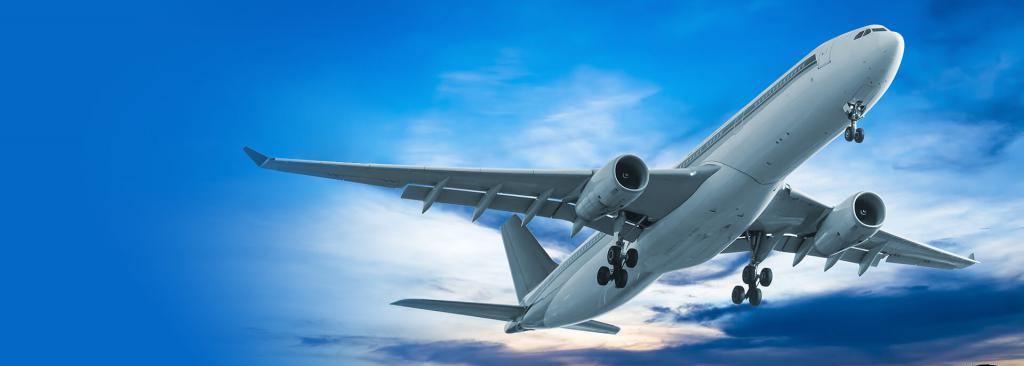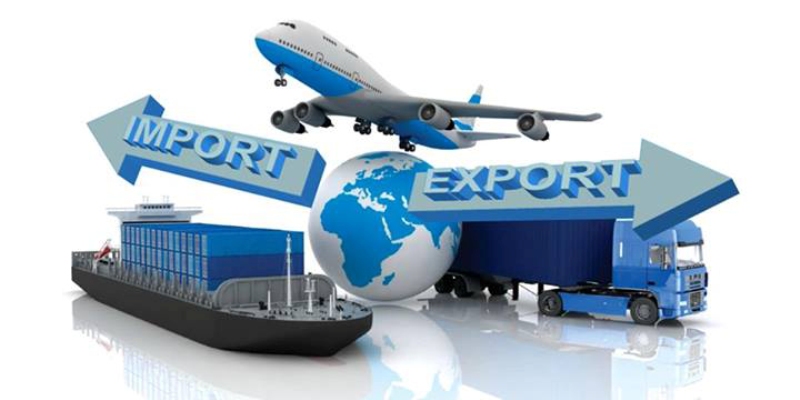If you don’t do hair cutting at a distance, then it is quite possible to make a medical diagnosis or to insure a new car online. The market for international trade in services is growing rapidly and changing. It's all about the development of new technologies. A cross-border method of exporting services will soon become the most common. There are many interesting features.
The importance and expansion of exports and imports of services can hardly be overestimated. The service sector will soon account for more than half of global revenue. As for human resources, 70% of all those employed in the labor market are engaged in the production of services. The growth in exports of services is primarily due to the development of digital technologies. A special role here is played by modern communication capabilities. All this fully applies to Russia.
Differences of services from goods
As far as services differ from goods, so service import and export are not like the classical foreign trade in goods.
The fundamental difference between services and goods lies in the fact that most often you can’t feel or see a service (you can still see something: for example, a consultant’s report on paper).
Another important difference between the service and the product are ways of protecting domestic producers by the state. The protection of goods and entire industrial sectors has been developed for a long time and is quite understandable. These are various regulations, rules, tariff control, customs payments, etc. Most of the methods in this case are connected with goods crossing domestic borders, which is part of the responsibilities of the Russian customs service.

It is quite another matter with the export of services. The word "export" means that the service is provided to an alien, that is, a non-resident. Moreover, this non-resident may be located in the territory of the country of the service provider. Protecting services at the border is simply not possible. First, their nature is intangible. Secondly, the provision of services is rarely associated with the crossing of customs borders by individuals. What to do, for example, with Internet services? There are many questions, all of them require clear and transparent answers.
Definitions and concepts
At the global level, the service market is nothing more than an exchange of services between countries. This market is growing rapidly and has already become a major factor in international economic and political relations. Services in this case are part of various spheres of human activity: science, education, management, medicine, etc.
At its core, a service is a specific action performed by the contractor on the instructions of the customer under an agreement between them. If the services are provided at the international level, then we are talking about economic relations between residents and non-residents, that is, foreign trade.
The definition of export of services is set forth in Rosstat document No. 667 of December 29, 2012: export services are provided by residents of the Russian economy to non-residents.
There are more and more types of international services. After-sales service of various nature is registered on the accounts of balance of payments of countries of the world. The process of foreign trade in services should not only be analyzed, but regulated in the most careful way. Their influence on the economy of the country as a whole is too great. As for the prospects, this influence will only increase.
Government Regulation: Duties or Taxes?
The issue is highly relevant, especially for financial departments and accountants in organizations dealing with such services.Who should control the growing volume of international service in Russia? Customs Service? Tax Committee?
There is a regulator. This is the federal law N 164-ФЗ "On the basis of state regulation of foreign trade activity" dated 08.12.2003.
The regulators of foreign trade in any country are faced with two related, but opposite in content tasks. First of all, domestic producers should be protected from imports of competing goods or services from other states. The second, no less important thing is to support domestic exports, expanding market prospects for Russian products.
What can I say, introducing bans, restrictions and limits is easier than increasing the competitiveness of Russian exports. The vast majority of foreign trade regulators is associated with the protection of the domestic market from foreign competitors. This is a common situation in many countries, including the Russian Federation.
The Law “On the Basics of State Regulation of Foreign Trade” did not escape the dominance of “import” and “commodity” chapters. Services in the law are devoted to the sixth chapter entitled "State regulation of foreign trade in the field of foreign trade in services." The three articles that make up the chapter describe the rules for the provision of services, the national regime and the measures necessary to protect the interests of domestic service producers.
Service Export Taxation
It's all about the place of sale of the service to a non-resident. If this is the territory of the Russian Federation (and non-residents may well be in it), then the service is subject to value added tax. If the place of sale of the service is outside the borders of Russia, VAT is not levied when exporting services.

With clarification of the place of sale of the service, not everything is simple, the variability of concepts is very high and, as a consequence, the variety of interpretations. Therefore, for the most part, export services to determine the place of their sale are listed in Article 148 of the Tax Code of the Russian Federation. Examples are:
- real estate operations;
- gas transportation through pipelines in the Russian territory;
- service in tourism, travel and leisure;
- educational services;
- cultural and art services;
- road transport, chartering, etc.
Of course, there are problems in the Russian foreign trade in services. They are as follows:
- Persistent negative balance for a long time since 1994. The export of services has never exceeded imports. Moreover, since 2012, the volume of imports has doubled more than exports.
- Unbalanced export structure of Russian services. While the share of transport services and travel in the world structure is about 70%, in Russia this figure exceeds 80%.
Classification of Export Services
Cash receipts from the export of services are inherently invisible items in the country's balance of payments. Problems and questions of international regulation of such proceeds began to arise after the Second World War. In this regard, the well-known General Agreement on Trade in Services (GATS) was formed and signed, which became one of the main documents at the establishment of the World Trade Organization.
Since Russia is a member of the WTO, it is necessary to know and adhere to the rules and principles for the classification of services for exports adopted by the World Trade Organization.

According to the WTO, all services are divided into twelve sectors, which include services in the fields of ecology, communications, finance, construction, education, tourism, transport, culture, etc.
This kind of classification is necessary because of the completely different nature of the services. Different characteristics determine different ways of international operations that need to be determined accurately and without any doubt. After all, goods in the form of export or import somehow or other move across customs borders from one state to another.And of all types of services, only a small fraction moves across the border. Using the right classification, exporting services is easier to analyze.
The classification of the International Monetary Fund is practically no different from that in the WTO: it has one less sector. The World Bank operates with larger groups of international services; there are only two such groups in its system:
- Factor services related to the movement of factors of production. First of all, this concerns the movement of capital and labor (investment income, wages to non-residents, etc.).
- Non-factor services that are in no way related to production factors. These include everything related to transport and travel.
Competition and World Leadership
Western Europe is still a global exporter of services. Its share is 49% of the service produced worldwide. The main types remain transport and tourism services. But they are on their heels are the services of banks, medicine, training, etc.
Travel services in Western European countries will be difficult to overtake. It is understandable, a unique infrastructure has developed there as a complement to numerous historical and cultural attractions. An excellent hospitality service is integrated with the export of educational services: a huge number of students from all over the world study in Europe.

If we talk about individual countries in the region, then France, Germany, Italy, the UK and the Netherlands are leading in the export of services.
The second place in the export of services by right belongs to the countries of Asia. The profile of their dominant service is different from the European one. The Asian region is strong in sea and air transport; it has no equal in the transportation of goods of any volume and tonnage. This area also includes road transport.
North America holds the bronze award among service leaders in terms of service volume. Mostly it's the USA. It is difficult to distinguish any predominant types of services, the Americans what they just do not do. The exclusive products could be called Silicon Valley products related to information and digital technologies. But here an interesting phenomenon is revealed: many companies and specialists from around the world work remotely on the Silicon Valley. And this is nothing more than the import of services from other countries, including Russia. There is a magnificent picture of the international integration of intellectual services, the development of which is taking place at space speed.
The structure and dynamics of the global services market
Today, half of the world income from exporting services accounts for everything related to transport and travel. 23% of the total cash flow comes from international transportation, and 27% from international travel, including tourism and business trips.

The share of services in the total world export of goods and services is not the largest yet - only 29% (the share of imports of services is about the same). But the volume of foreign trade in services is growing much faster than trade in goods. So you will not be mistaken if you consider these moderate percentages obsolete. At the time of reading this article, it will happen.
The arguments for the growth in the volume of services are most serious:
- geometric growth in demand for new generation banking, financial and insurance services;
- technological revolution in almost all areas of activity;
- breakthroughs in the field of digitalization, information and Internet services.
Ways to provide export services
There are only four such methods:
- The cross-border method, in which the producer and consumer of the service do not cross the customs border. Crosses only the service, and most often through telecommunications. It can be video consultations through messengers or bank services in the form of money transfers abroad. Transport services in the form of cargo transportation also fall under this method.It also includes, for example, freight services and everything related to shipping.
- The receipt and consumption of services abroad, that is, the location of the consumer in the country of export. The service provider, in turn, does not move anywhere. Such a method of service includes a whole layer of services, including tourism, treatment in foreign clinics, and repair of aircraft in foreign hangars.
- Formation of a “commercial presence” of a service producer in the country where this service is provided, that is, abroad. For this, for example, branches or local "daughters" are opened. As a result, the service producer moves. It is a matter of numerous processes related to labor migration. Foreign investment in various projects is also most often made through local representatives.
- Temporary relocation of individuals as producers of services to the country of receipt of these services. Everything is simple here: it is a theatrical tour, full-time consultation, a university lecture by a professor, etc.
It should be noted that the last two options relate to the usual and traditional methods of exporting services. There are more of them in the total volume. But this is a temporary phenomenon, and everything is going to drastic changes: technology does not stand still. Apparently, cross-border export of services will soon become the main one.

Export of financial services
The absolute champion in the volume of export of banking services remains Western Europe. This applies primarily to the import and export of foreign capital. From European countries, Britain and Germany are traditionally leading here. Even in the United States of America, financial services exports are almost half the size of Europe.
Of the ten leading stock exchanges, seven are located in Europe with the largest of them in London, Paris, Zurich, Geneva, Milan, Frankfurt and Luxembourg.
In the banking sector, the forecast for the export of services is also the most rosy. According to experts, by 2020 their share may amount to 10% of the total GDP in the world.
Prospects and Forecasts
Forecasts for the development of foreign trade in services are the most positive. This process expands the window of opportunity for a huge number of classroom professionals around the world. Everything is done faster and more efficiently.
The global services market is distinguished by its dynamism and tight integration into all spheres of human activity. Today, the industrial production and marketing of goods is impossible without related services.
Services and production of various types are closely interconnected. And if so, then the slightest market fluctuations in one market can lead to sensitive changes in another.
Live dynamics of capital turnover, shortened production cycles in the service sector, expansion of product lines of a wide variety of services - all this is combined in an integrated system of foreign trade.
Support for the export of services from Russia should be constant, systemic and maximum. Today, transport services bring the largest income: they account for at least 30% of all exports.

Very good international prospects for software, telecommunications services, business support of business in the form of leasing, audits, consulting, etc.
The main task is seen as supporting and expanding the volume of Russian export of services in the high-tech sector: information and computer. In Russia, thank God, such specialists are available.









